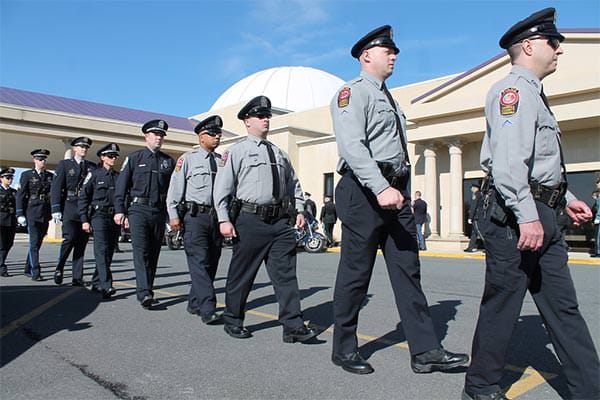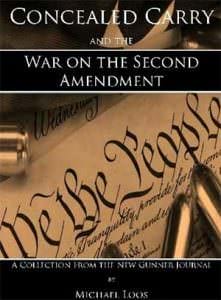by Michael W Loos


USA –-(Ammoland.com)- In America, for a long time, we have continued to hand Law Enforcement evermore authority over our citizens with cases such as Heien v. North Carolina – which allows Police to use evidence found in violation of your Fourth Amendment Rights as long as the Officers were reasonably ignorant of the law. Reasonably ignorant?
Can this ruling be any more ambiguous? They have destroyed the very foundation of the Fourth Amendment in deference to the possibility of a bad guy going free.
Whatever happened to Blackstone’s Ratio – “It is better that ten guilty persons escape than that one innocent suffer.”
The Supreme Court has ruled using dogs to find probable cause is not a violation of your Fourth Amendment Right to illegal stop, search and seizure – as long as they do it within the time frame of the initial stop.
To explain; If you are stopped for any reason, in order to detain you, the Officer must be able to show ‘reasonable suspicion” – he must be able to articulate why he suspects you of having committed a crime, are about to commit a crime or are in the process of committing a crime. If he is unable to do so, he must let you go along your way.
In the past, Officers were able to pull you over and then, without probable cause, detain you until a K-9 unit was brought in to sniff search your car. Here is the rub… If the Officer suspects you of a crime, then he has probable cause to search your car – he should go right on in. If he does not have ‘reasonable suspicion‘, only a hunch or inkling, he is supposed to let you go.
Bringing in a dog says, “I’m detaining you illegally because I have a hunch, not probable cause, but after the dog does his illegal search and hits on something, then I’ve confirmed my hunch and now have reasonable suspicion to search your car.”
Now isn’t that just “spit on my neck and poke me in the eye” lovely? Law Enforcement has an ongoing image problem and you’d think they would be doing everything possible to affect a change of that perspective.
Ever heard the phrase “Law Enforcement is held to a higher standard”? Hell, I would be happy if they were held to the same standard as the citizenry.
How often do we hear of LEO assaulting someone, then resigning without assault charges being filed? Can you say Officer Daniel Andrews? Resignation or suspension – as if that equates to what would happen to the very citizenry LE is supposed to be protecting. Most citizens believe that if the Officer committed a crime, then they should be charged! But, apparently, not the Police.
And now comes along the Police Bill Of Rights!
These are “Rights“, afforded Police Officers in the aftermath of a lethal shooting.
These protocols are 180° away from the Rights you and I, the Second Class citizen, are afforded.
What are these “Rights?”
As found in Management of Officer-involved Shootings by Sergeant Barry E. Roy – University of Arkansas System: Criminal Justice Institute – these are just some of the suggested protocols to be used during the investigation of an Officer involved shooting. Keep in mind these types of protocols are in use in 13 States to date.
Under the heading The Crime Scene Investigation:
(bold emphasis added)
2. We need to see that the investigator is able to get certain immediate information without compromising personal, legal protection. In many instances the officer(s) is the only witness to the event. As on [scene] supervisors, we should get a short, basic description of the event; it needs to be the least amount of information to communicate the nature of what happened. It is important for the officer(s) to identify the scope of the scene. The initial information should be given orally with as little detail required to get the investigation started. – (The Police will not care about your personal legal protections. They will want as much information as they can get from you.)
3. We should make sure that the involved officer(s) is made aware of what will be taking place from the beginning of the investigation. It is important to keep him informed and updated throughout the process to reduce the probability of unnecessary anxiety. – (Your anxiety is none of their concern. Only pressing you for more information.)
4. We should require our investigators to inspect the weapons of all the involved officer(s), even if the involved officer(s) does not believe he fired the weapon. “It is possible for an officer to discharge a weapon during a critical incident and not be aware of it” (Artwohl, 2002, pg. 19). – (Even though they know you may be so messed up in the head as to believe you didn’t fire your gun, they will still ask more questions. Can you imagine the D.A’s feeding frenzy if he hears you didn’t even realize you fired your sidearm?)
5. Unless it is absolutely necessary or required by department policy, we should not seize the officer’s weapon at the scene. – (Your gun is gone. Kiss it goodbye.)
7. Ensure that the involved officer(s) is not isolated and that he has access to a family member or support team member. The officer(s) should be ordered not to discuss the specific details of the incident with his support member. “Be prepared for a wide range of emotional reactions from on-scene personnel” (Artwohl, 2002, pg. 19). – (I don’t even have a response for this. Do you think an Officer is going to whisper in your ear “Shut up, man, don’t say a word till you’ve talked with an attorney!” Yeah, right.)
9. If at all possible, we should establish a quiet area where the affected officer(s) can be isolated from the general commotion, on-lookers, and media. – (Since you will be in the back seat of the cruiser, I don’t think this will be a problem.)
11. We should not allow the affected officer(s) to drive from the scene to another location. A driver should be made available to transport the officer(s) when the need arises to relocate. The involved officer(s) could be promptly transported to the hospital which would provide a safe refuge and appropriate medical attention.
12. We should encourage the affected officer(s) to go home and get some rest before giving an official statement. It is suggested that an officer(s) wait 24 to 48 hours before giving a statement. (Artwohl, 2002). – (This is why we stop answering questions. We need time to process the situation.)
Who in their right mind believes LEO should be afforded special protections during an investigation into the aftermath of an Officer involved shooting?
If you should ever be compelled to defend yourself from a violent attack and are forced to shoot the attacker, you can expect to have LE show up and treat you as a suspect in a homicide. It’s how they are trained and it’s just one of the reasons why you’re taught to give the basic information of the attack – that you were in fear of your life, point out witnesses, shell casings, anything that may be construed as evidence and then politely tell the Officer you want to help with the investigation, but at this time you will not be answering anymore questions until you’ve had an opportunity to consult with your attorney… and stick to it!
You will be prodded for the particulars. You will be told that it’s better to get the story while it’s still fresh in your mind. Your gun will be confiscated. You will be interrogated. You will take a ride.
Though rest assured, you will not be treated as a respected Brother in Blue.
Something is wrong in this Country when the protections of citizens Rights take a back seat to those who are sworn to protect us.

Something is very wrong.
Stay Safe and Carry Responsibly,
Hipshot – NewGunnerJournal.
My new book – Concealed Carry and the War on the Second Amendment, a collection from the New Gunner Journal – is now available at Lulu.com, Amazon and Barnes and Noble. If you have any questions about Concealed Carry or are sitting on the fence, this would make a nice Christmas present to learn about the lifestyle and those who live it.
Order now… “Concealed Carry and the War on the Second Amendment”
